Art attack in downtown Quincy: Who is Atom Mother, and what is the story behind the giraffes?
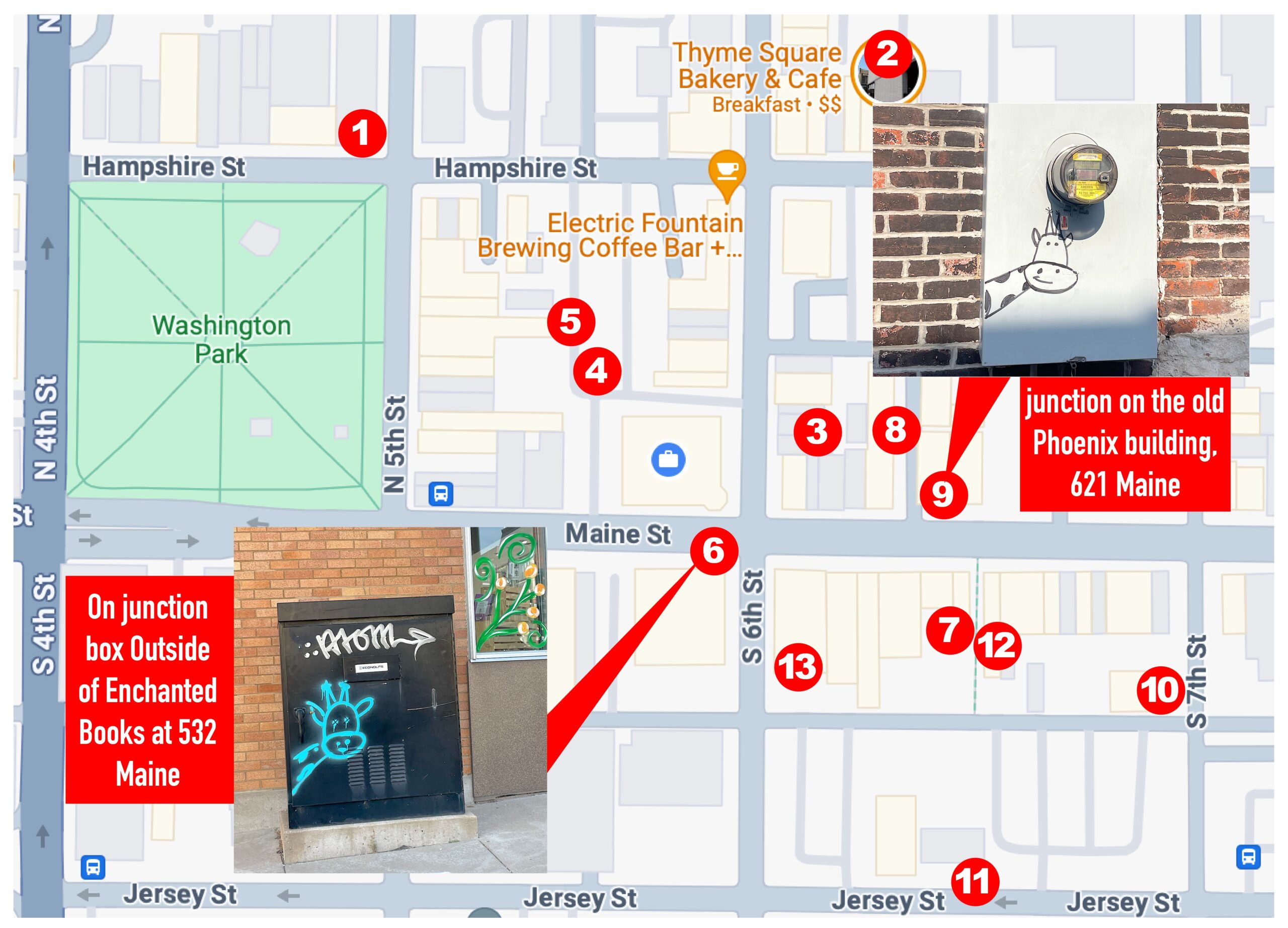
I drew the giraffe blue
Because I’ve never seen a blue giraffe before
And to be honest with you
I wanted to see a blue giraffe.
Downtown Quincy has its very own Banksy making their mark on dumpsters, junction boxes and even the sides of buildings. Banksy is the alias of an England-based street artist, political activist and film director whose real name and identity remain unconfirmed and the subject of speculation.
Active for more than 30 years, his street art combines dark humor with graffiti executed in a distinct stenciling style.
Their unifying feature is not simply graffiti but rather their subject matter. Graffiti is commonly a limited diet. Highly stylized lettering of an artist’s name, b-boy style bubble words and your occasional, “Hey look I found a spray can, let’s go write some funny shit about Todd.”
When work goes against that grain, it can seem profound.
Enter Atom Mother.
If you frequent the downtown, you may be familiar with this person’s work — a cartoon giraffe, neck craned as if he has just popped his head into the frame for a moment.
Sometimes the giraffe is paired with a signature that reads ATOM or MOM (I can’t really tell). Maybe it’s both. It’s giving Atom Heart Mother vibes, which then would mean that the giraffe means “nothing.”

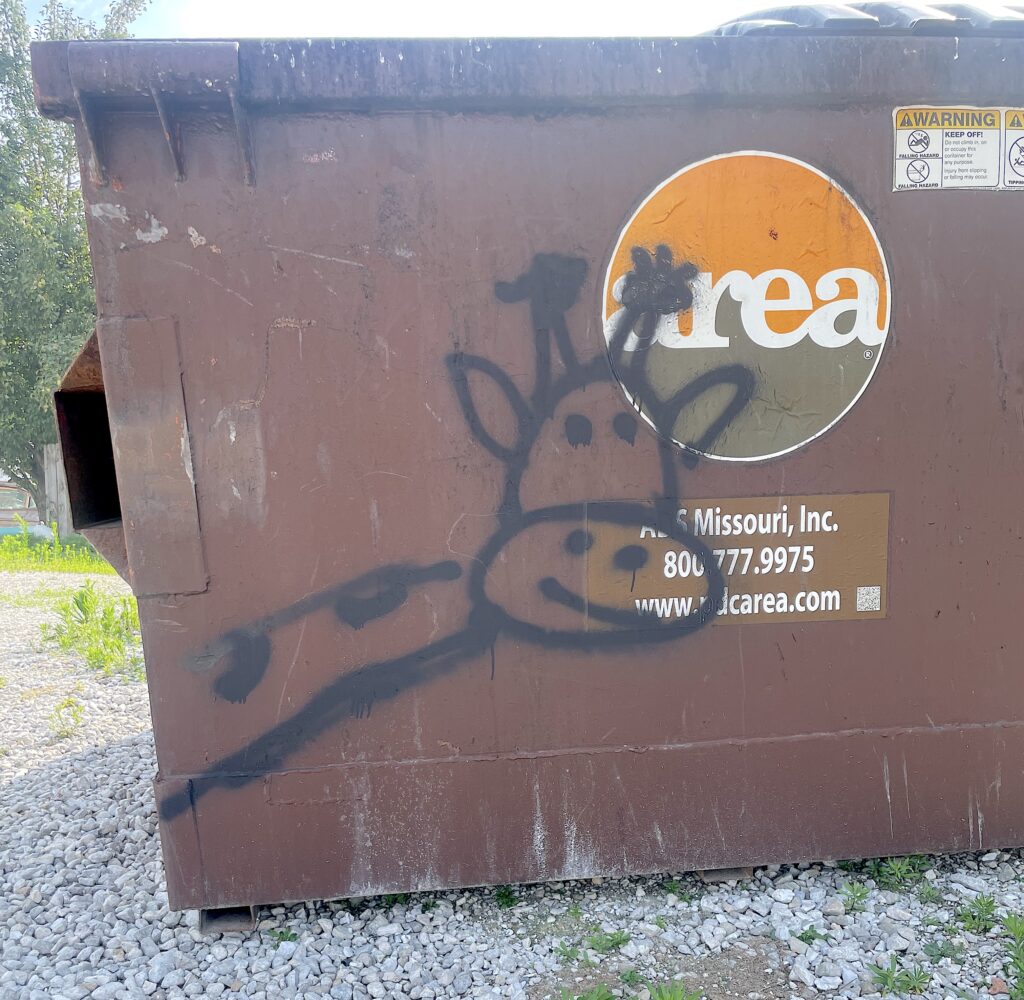
2. 617 Hampshire,
behind Thyme Square on dumpster

on electrical box
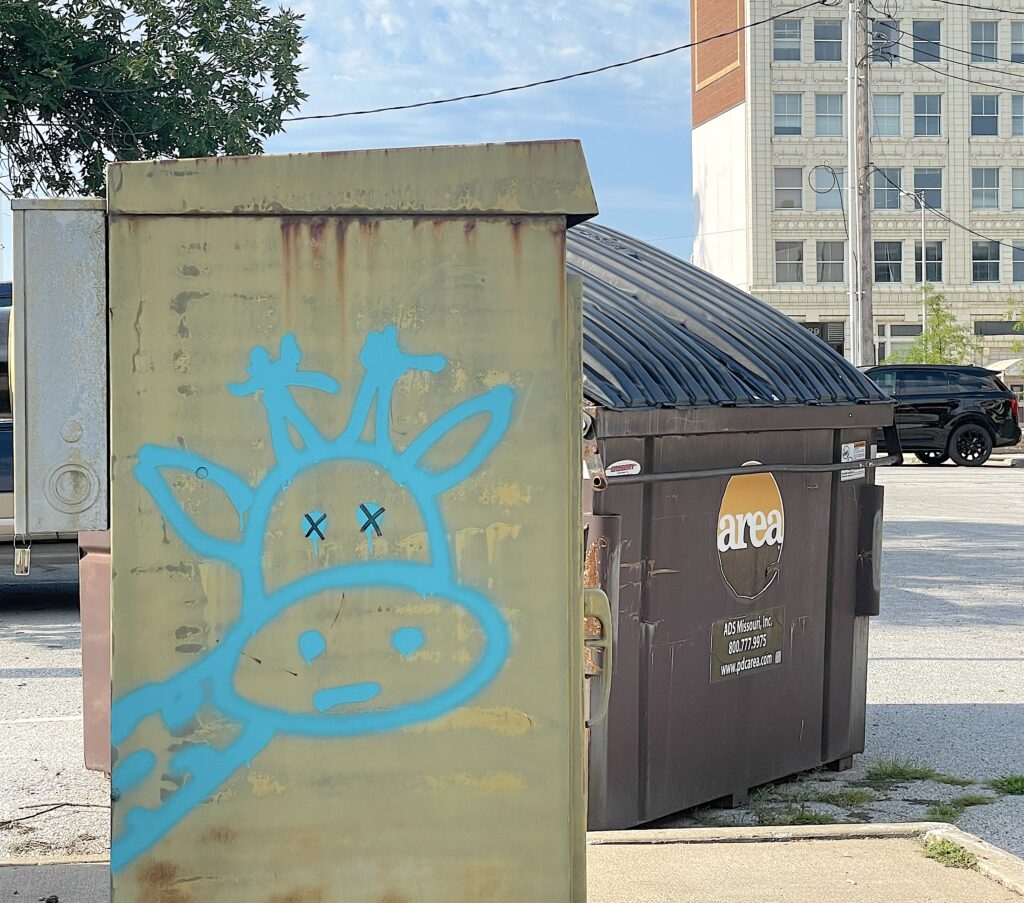
4. 100 Jail Alley on junction box
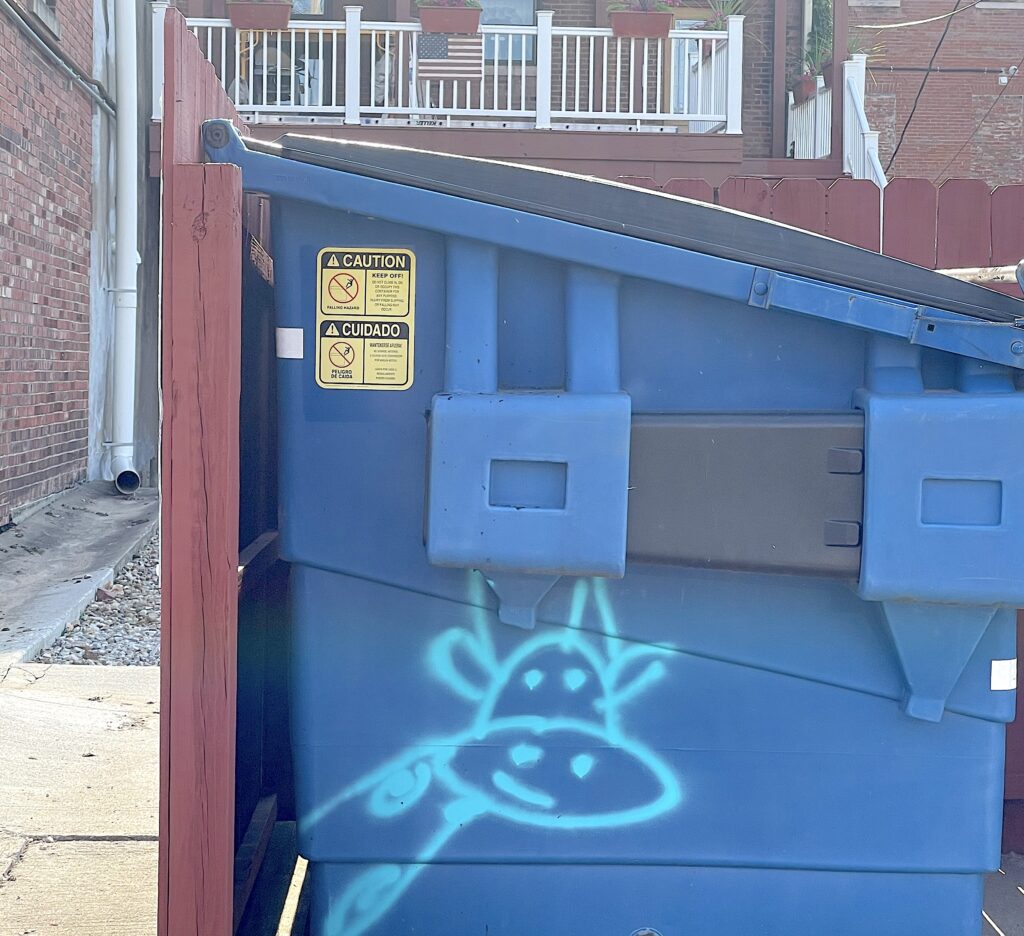
Games and Grains, 124 N. Fifth
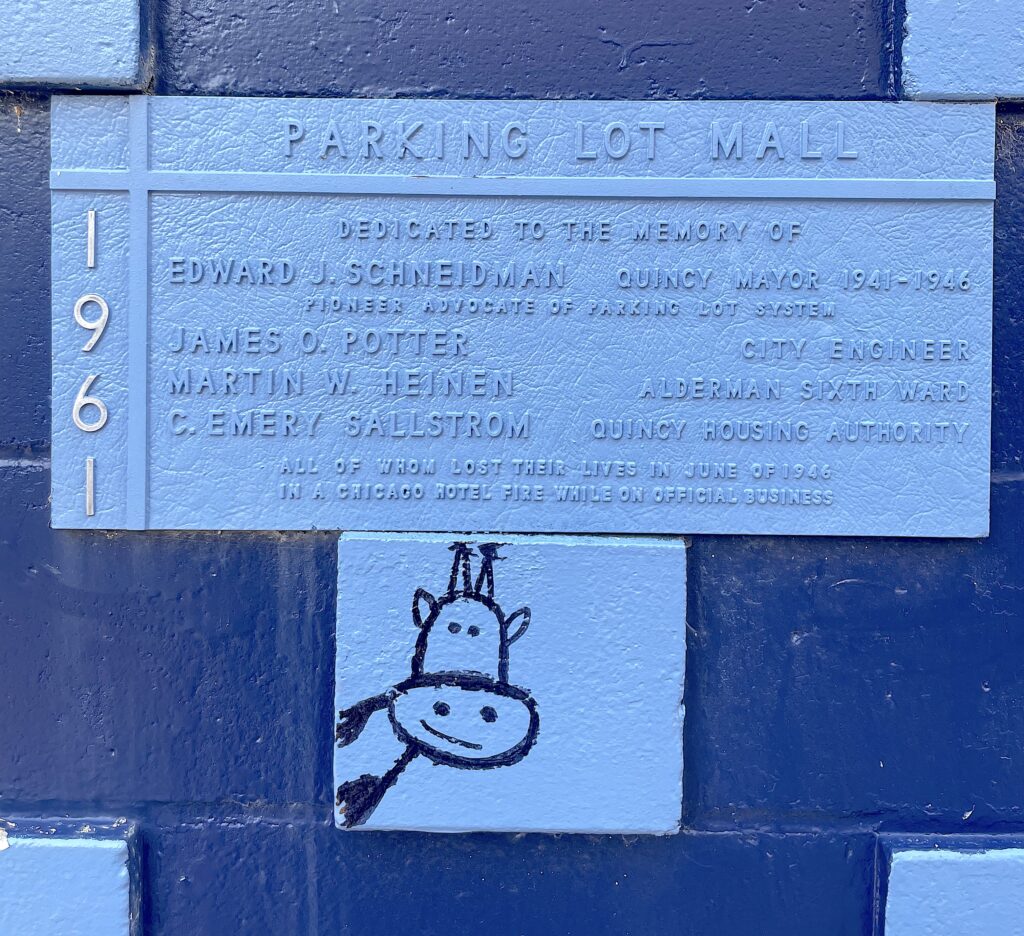
Maine Course, 628 Maine
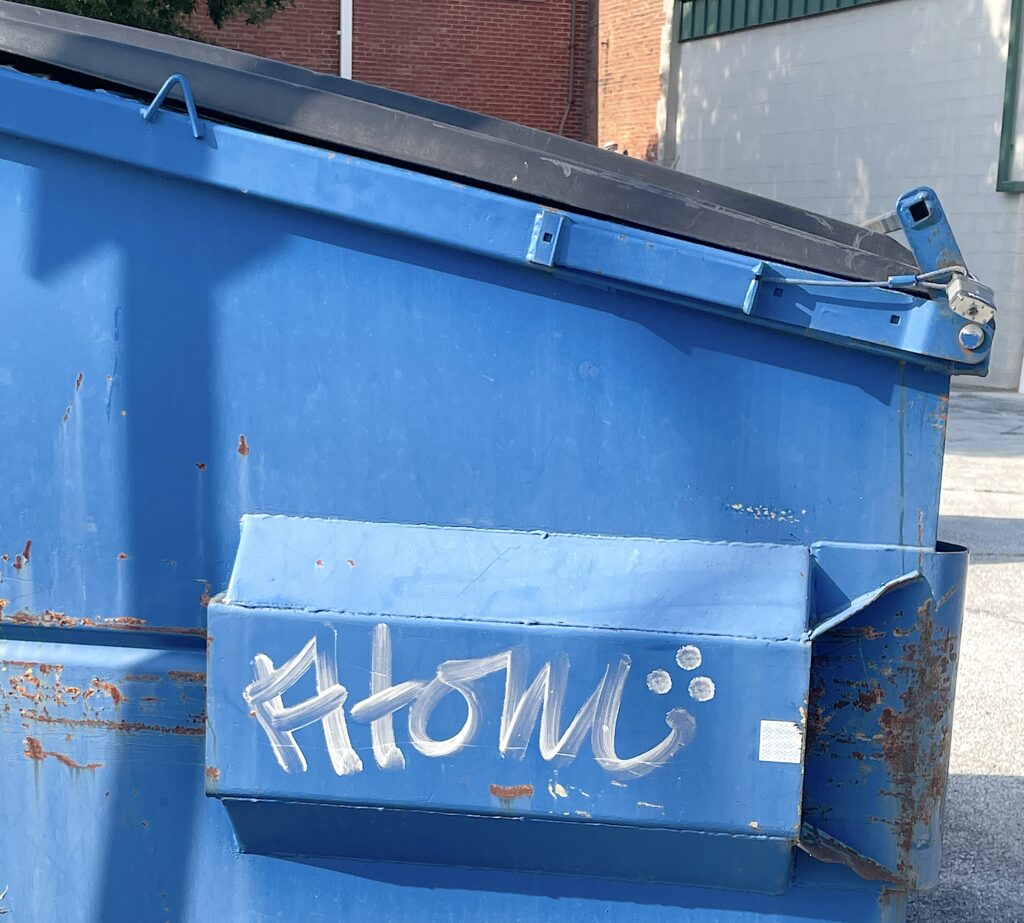
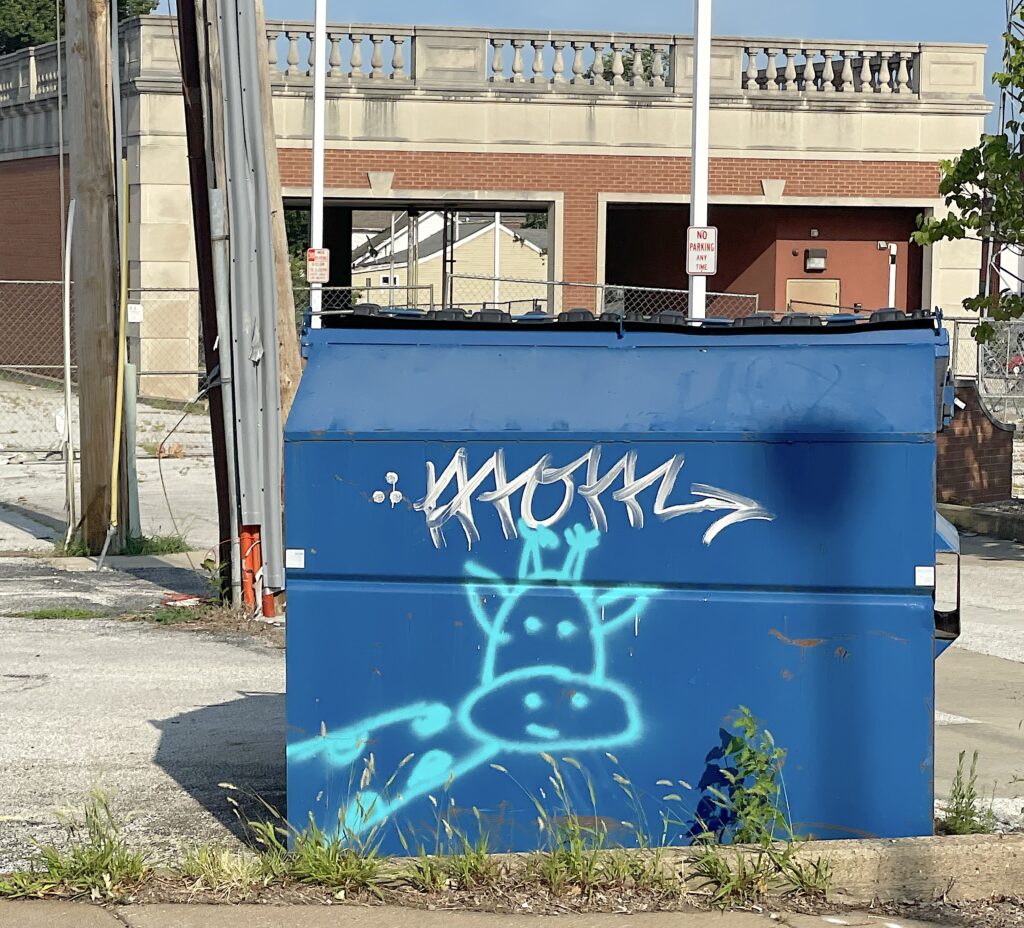

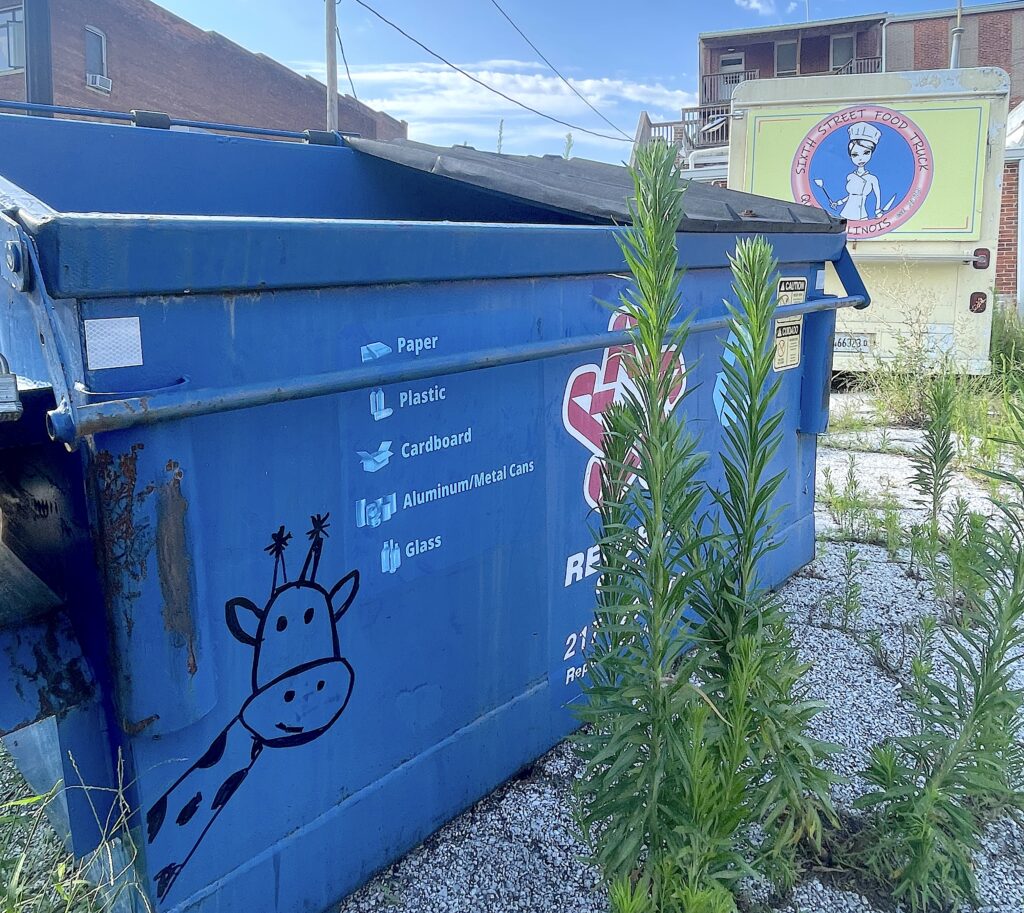
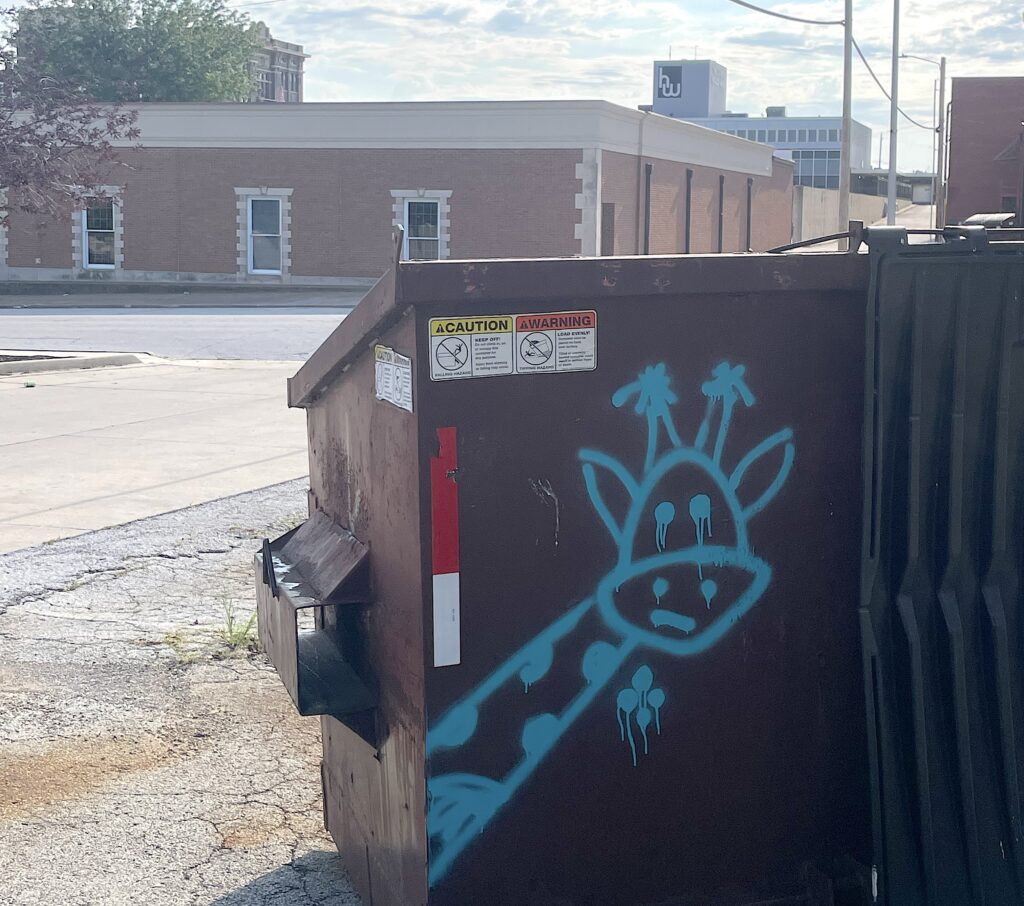
Giraffes are the poster child of evolution. Of change over time. You know the story.
Giraffes, as well as other animals that feed off the vegetation of trees, share a common ancestor. Each developed over millennia to be best suited to feed off the vegetation of a specific part of the tree. The Okapi of the Congo feeds off the lower boughs, while the giraffe feeds off the upper ones. If we go back far enough, they are one and the same.
If art is the common ancestor, then where there are watercolor paintings of ponds, Shakespearian dramas and French horn concerts, there must be graffiti, flash mobs and punk rock.
Cousins, feeding off different parts of the same tree.
History
The history of humans drawing and writing on things is as old as it gets.
The prehistoric period is said to end with the act. From 30,000-year-old cave art to 2,000-year-old political commentary etched into the walls of Pompeii, graffiti in its many forms is often our greatest window into the earliest days of our species. It lets us know that we are bound to our ancestors, that we thought the same, had the same emotions, were obsessed with politics and sex, and more than anything, that we were here.
For just a single moment in time, the traced hands of the Cueva de las Manos, penises on the walls of brothels in ancient Rome, phone numbers on bathroom stalls, and Jimi soulfully singing beneath the train bridge on Quinsippi Island are all testament to our desire to make a mark and be remembered.
When we arrive in the modern era, graffiti takes on a different connotation. Often scrawled on the side of buildings and trains, it is a burden on the property owners. Gangs and drug dealers use it to mark territory.
This idea initially piqued my interest in Atom Mother.
Most of their work is on dumpsters, electrical boxes or miniaturized and scrawled in marker on alleyway walls. Not totally innocent, but the unobtrusive nature of the placement and soft subject matter makes it stand out in a sea of illegible street calligraphy and bubbled train car tags.
It makes me happy. That seems to be its only purpose. It stands out like the bouquet of red roses against a black and white background in that Banksy piece.
You know the one.
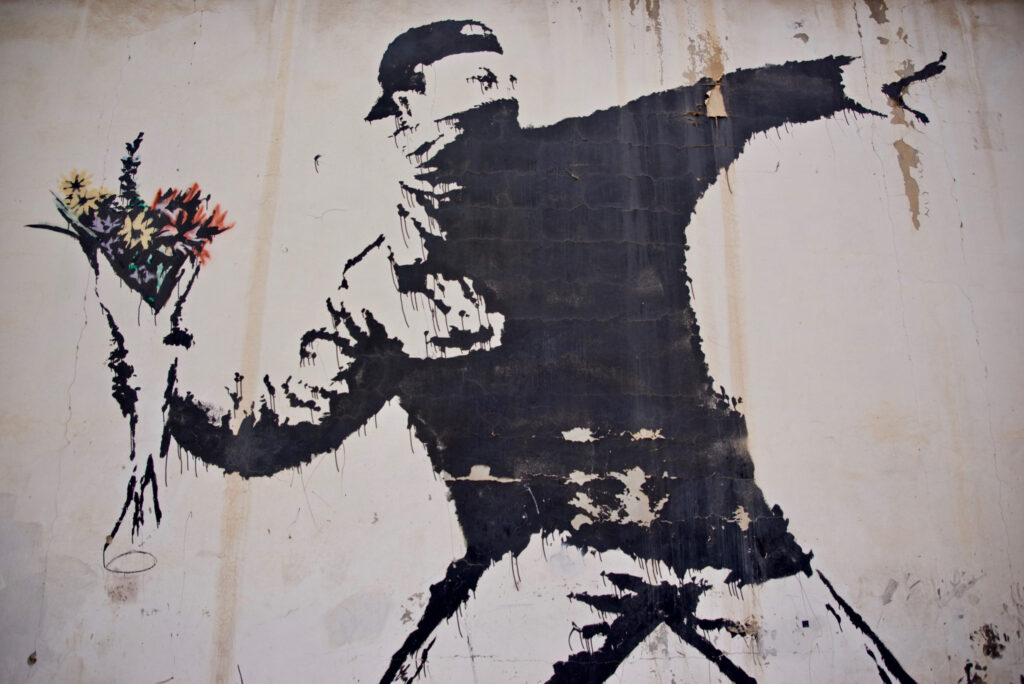
Is graffiti art? The answer is as subjective as art itself. What brightens the day of this shot-slinging content creator probably causes others to curl a lip.
The road to being the next Banksy is full of restraint, compromise, talent and the ability to push out content as controversial as punk rock without pissing too many people off. If the city goes around covering up your work, it’s tough to reach an audience. Though, on the flip side, few things foster hype and street cred like the man trying to shut you down.

Graffiti is sometimes referred to as glorified vandalism, and vandalism is illegal.
MRN makes no qualms about it and is not condoning or encouraging these actions. The actions are done. The graffiti is there. Graffiti is art.
We just want to know the story behind it.
Miss Clipping Out Stories to Save for Later?
Click the Purchase Story button below to order a print of this story. We will print it for you on matte photo paper to keep forever.

